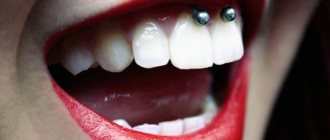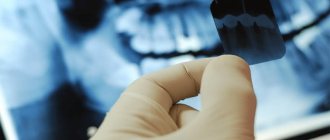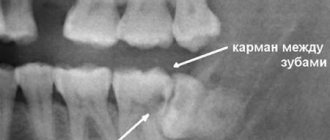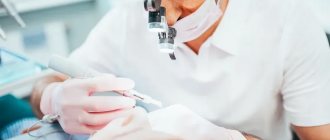How does the virus become infected?
The virus can be infected in different ways: airborne droplets, contact (through shared towels, cutlery, through kissing), sexual intercourse, self-expression (when the virus from ulcers enters healthy mucous membranes and infects them). You can become infected through a blood transfusion and a child can receive the virus from the mother in utero. The incubation period (from the moment of contact until the first signs appear) is 2-14 days. A person becomes contagious as soon as sores appear on the lip, and is contagious to others until the scabs fall off .
Photo: One of the most common ways of transmitting herpes is contact.
Reasons for appearance
Acne in women can appear for a variety of reasons. But there are the most common provocateurs:
- Hormonal changes. Various hormonal imbalances and diseases of the reproductive system can lead to the appearance of acne around the mouth.
- The use of drugs with hormonal composition. This especially applies to medications containing prednisolone and hydrocortisone. Also, uncontrolled and not coordinated with the attending physician taking hormonal contraceptives.
- Fluoride toothpaste
- Constant use of aggressive cleansers and foundations of poor quality
- Adverse weather conditions (prolonged sun exposure, strong winds)
- Standard saprophytes
- Problems with the digestive system, which directly affects human immunity
- Chronic infectious problems
Also, perioral dermatitis often appears after starting to use hormonal cosmetics to treat other skin diseases.
Women resort to the help of such drugs to relieve itching and inflammation, but in fact they only worsen the situation. Also, good intentions are the most common cause of perioral dermatitis. So it turns out that hormonal drugs improve the situation a little, and after their refusal the situation only gets worse. Therefore, it is strictly forbidden to self-medicate; you need to seek help from a qualified dermatologist.
Why do cold sores appear on the lips?
Those who suffer from herpes have noticed that exacerbations begin along with ARVI. Herpes occurs when immunity decreases, the protective forces of which are used to suppress ARVI. Colds on the lips also appear when the body’s defenses are weakened: with chronic fatigue, lack of sleep, frequent stress, poor diet, alcohol abuse and active smoking, in women at the beginning of pregnancy and in the first 5-7 days after childbirth.
Photo: Colds on the lips can only appear if the immune system is weakened
Causes of acne around the mouth
Not all experts agree that this is a disease on its own. Some associate it with allergic and seborrheic dermatitis. Those who are inclined to believe that the disease is independent also call it perioral and steroid dermatitis. This disease affects women and girls aged 18 years and older. Cases of the disease in children and men are rare. The exact provocateurs have not yet been discovered, but there are a number of reasons contributing to the development of the disease. Basically, this is a weakening of the body’s protective functions, which occurs due to the influence of external factors and internal problems in the body.
How does herpes manifest?
In medicine, it is customary to distinguish 5 stages of the development of herpes simplex: 1. The first stage occurs when blisters appear. It manifests itself as burning and itching in the lip area, and its swelling. 2. The second stage begins with the appearance of bubbles. At first small, they grow and fill with clear liquid. After a couple of days the liquid becomes cloudy. 3. The third stage of the disease is characterized by rupture of the vesicles. In place of the burst blisters, ulcers with swelling form. This stage is dangerous due to the development of complications. The person at this moment is very contagious. 4. In the fourth stage, the ulcers become covered with a dense crust. 5. At the fifth stage, the crusts dry out and fall off. The symptoms go away. The person becomes no longer contagious.
When to see a doctor?
If pimples appear, this is not only a cosmetic problem.
Most likely they indicate some internal disorders. The woman is in a hurry to start treatment, as the rash spoils her appearance and her mood. However, as mentioned above, self-medication only makes the situation worse. This is manifested by ulcers, the spread of the disease to new areas, perhaps the disease will affect the eyelids, which can provoke ophthalmological problems. Therapy involves the use of medications. They are not prescribed only to children and pregnant women. For them, treatment includes herbal infusions. For all patients, a diet is required, according to which any foods that can cause stomach irritation are excluded from the diet. These include pickles, spices, sour and spicy foods and dishes, alcohol and strong tea. These products cause a strong rush of blood to the skin of the face.
This makes it easier to determine the root cause of the rash. During the treatment period, you need to stop using cosmetics and synthetic detergents, and also stop taking hormonal medications. Antibiotics are prescribed exclusively from the tetracycline group. They can be in the form of creams or tablets. They may also prescribe drugs with imidazole. It is this that effectively affects harmful microorganisms that provoke the appearance of the disorder.
The treatment is quite long, improvements begin to appear after at least a month of therapy. At its beginning, a serious aggravation is possible. You can completely get rid of the problem in 3-4 months. If a person has allergies, he is also prescribed antihistamines. Immunity-boosting drugs are also a mandatory part of treatment. These include nicotine, riboflavin, Ascorutin and B6. All medications are prescribed by the attending physician, as he prescribes treatment based on the results of a detailed examination.
How can herpes be dangerous?
Herpes can cause many complications. Some of them are life-threatening.
- Bacterial complications. Most often, bacteria simply attach to the virus and the blisters fill with pus. If the blisters have already burst, then the ulcers become covered with pus, the pain in the lip becomes unbearable and a crust does not form.
- Herpetic stomatitis is a lesion of the oral mucosa. The disease begins with a sharp increase in temperature, salivation and sharp pain when chewing food. There are many blisters in the mouth, similar to herpes on the lips.
- Herpetic eye damage begins with pain in the eyes and lacrimation. A person cannot open his eyes due to severe pain. A dangerous condition that can result in blindness.
- Herpes of the esophagus. Occurs when herpes spreads from the lips. There are difficulties when swallowing, severe pain, refusal to eat and weight loss.
- Herpetic pneumonia and herpetic hepatitis occur in people with immunodeficiency and occur together with bacterial and fungal processes.
- Herpetic damage to the nervous system occurs in the form of meningoencephalitis and is the most severe form of herpes. It begins with a sharp headache, nausea and vomiting, high fever, movement disorders and convulsions. The disease is unfavorable.
Photo: To avoid complications, you need to start treating herpes in a timely manner.
Acne on the face
Acne
Acne
Fungus
Allergy
25251 02 December
IMPORTANT!
The information in this section cannot be used for self-diagnosis and self-treatment.
In case of pain or other exacerbation of the disease, diagnostic tests should be prescribed only by the attending physician. To make a diagnosis and properly prescribe treatment, you should contact your doctor. Acne on the face: causes of appearance, what diseases cause it, diagnosis and treatment methods.
Definition
The sebaceous glands in human skin are located at the base of the hair follicle. They produce sebum, which moisturizes the skin and protects against the negative effects of the environment, bacteria and fungi. Hypersecretion of the sebaceous glands provokes the formation of pimples (acne, blackheads). On the face, they are most often localized in the locations of large sebaceous glands (on the forehead, temples, cheeks, nose and chin).
Types of acne on the face
In its most general form, acne falls into one of two types:
Non-inflammatory elements
(comedones) - look like small tubercles or dots of different colors. Comedones can be open or closed.
- Open comedones look like dense surface-type rashes, usually gray or black in color, which gives them the oxidative reaction of their contents with oxygen.
- Closed comedones, subcutaneous pimples (milia) look like white bumps or dots that look like small grains of millet. Accumulated sebum has no way out, which leads to painful inflammation. Closed comedones often turn into classic red pimples.
Inflammatory elements
are immediately noticeable due to their size. The skin around them becomes thinner and redder, and the purulent contents of the pimple are visible through it. When palpated, painful or uncomfortable sensations usually occur. There are several types of inflammatory rashes:
- Papules (red pimples) are inflamed comedones without obvious purulent content. They look like small red or pink balls protruding above the surface of the skin; there is no white head. If a papule has formed at the site of an open comedone, then a dark plug can often be seen through the skin.
- Pustules are infected papules or, more simply, pimples with purulent contents and a white head, surrounded by inflamed skin.
They appear when, in addition to sebum and bacteria, dead skin cells get into the pores. Pustules are cone-shaped, flat or spherical in shape. Their color can vary from white to yellow or green. Green color means the addition of a secondary infection, and if you squeeze it out on your own, there is a high probability of its penetration into the blood. - Nodules (nodules) are deep, hard subcutaneous papules of bright red, bluish or purple color, ranging in size from 1 to 3 cm, protruding to the surface of the skin, often accompanied by purulent discharge. After recovery, pigment spots and scars are left behind.
- Cystic acne is a sign of damage to the deep layers of the skin, indicating the presence of inflammation with the formation of pus. Cysts located at a short distance from each other tend to merge, forming a whole chain connected by fistulas.
Cystic acne is difficult to treat and always leaves noticeable marks on the skin.
Possible causes of acne on the face
So, acne appears as a result of excess sebum production, which clogs the skin pores. If the pore is partially closed and there is air access into it, acne begins to form. At first they look like blackheads surrounded by inflamed skin - the so-called blackheads. In a completely clogged pore, like in a container, anaerobic bacteria ( Propionibacterium acnes or Malassezia
), provoking the inflammatory process and suppuration.
But what makes the sebaceous glands work so actively? It is believed that one of the reasons lies in the high level of androgens (male sex hormones), which stimulate the production of sebum. The development of hyperandrogenism can be facilitated by digestive problems, stress, diseases of the kidneys and adrenal glands, endocrine and reproductive systems.
It is important to mention that rashes on the face that look like pimples can be a symptom and manifestation of other, sometimes very serious, dermatological diseases (acneiform dermatoses), which are in no way related to the functioning of the sebaceous glands.
Acne on the face can be a symptom of a number of diseases (dysfunction of internal organs, hormonal dysfunction, lack of vitamins, decreased immunity), as well as poor environmental conditions and improper skin care. We list the main diseases, conditions and factors that result in skin rashes.
- Physiological changes in hormonal status: puberty, second phase of the menstrual cycle, pregnancy, lactation, menopause.
- Diseases of the endocrine system: polycystic ovary syndrome, hypothyroidism, tumors of the endocrine glands.
- Thickening of the stratum corneum of the epidermis (hyperkeratosis), when dead cells of the epidermis are not exfoliated, but remain on the skin, clogging the sebaceous glands.
- Liver diseases and intoxication caused by them.
- Poor nutrition and vitamin deficiency:
- The predominance of fast carbohydrates (fast food, baked goods, fried, fatty foods) in the diet provokes an increase in blood glucose levels and a sharp release of insulin, which, in turn, affects the increase in testosterone levels.
- Excess omega-6 fatty acids can aggravate inflammatory processes in the skin (such phenomena can be observed when consuming large amounts of fish and poultry raised on animal feed).
- Abuse of dairy products, sunflower, peanut, soybean oils and margarine often causes hyperfunction of the sebaceous glands.
- Deficiency of zinc, vitamins A and E, Omega-3 fatty acids.
) also play a certain role in the formation of acne and, if not their direct cause, then certainly complicate treatment.
Which doctors should you contact if acne appears on your face?
If you have skin rashes, you should consult a dermatologist and cosmetologist. However, treatment often requires an integrated approach, which involves treating the disease of which acne is a symptom. In this case, consultations with a neuropsychiatrist are necessary.
Diagnostics and examinations for the appearance of acne
Pimples and their localization are a kind of messenger that transmits information about disruptions in the functioning of organs or systems. Most often, acne occurs in the so-called T-zone (forehead, nose, chin) - here the sebaceous glands are most active and the pores are enlarged. But acne is often found on the cheeks and cheekbones (U-zone). This is due to various reasons and the state of the body. A special guide map “Types of acne and what they mean” has been compiled. Thus, the middle part of the forehead corresponds to the lower part of the digestive tract, the small intestine and the bladder, the area near the ears - to the kidneys, the eyelids and the area around the eyes - to the liver, the temporal region - to the gallbladder, the middle third of the face, cheekbones - to the lungs, chin - to the stomach, the pelvic organs, the nose - the pancreas and heart, and the lower part of the cheeks and lower jaw - the lower gastrointestinal tract.
Diagnosis begins with a thorough examination of the skin, collecting anamnesis (information about past illnesses, operations, chronic diseases, heredity) and establishing a connection between the rashes and lifestyle, nutrition, and habits.
If the nature of the disease is not obvious, laboratory tests are prescribed.
- Clinical blood test.
Methods for diagnosing herpes
Diagnosis of herpes is carried out, first of all, on the basis of examination of the patient, since herpetic rashes have a certain specificity. However, your doctor may order laboratory tests. Laboratory tests can detect infection even in the absence of obvious manifestations.
Herpes test
Be prepared that if you suspect a herpes infection, the doctor will write a referral for a blood test, which will determine the presence of antibodies to the herpes virus in the blood. Based on the results of the analysis, it will be possible to judge not only the presence of the pathogen, but also its activity.
More information about the diagnostic method
Sign up for diagnostics To accurately diagnose the disease, make an appointment with specialists from the Family Doctor network.
How to remove pimples above the upper and under the lower lip
Benzoyl peroxide
Benzoyl peroxide is an ideal combination of price and effective results against acne, even in the upper or lower lip area.
Benzoyl peroxide
How to use Peroxide?
Before using benzoyl peroxide, first wash the acne affected areas with tar soap. Even a mild cleanser would do a good job of treating acne before applying benzoyl. Gently dry the acne with a clean towel.
Gently apply a small amount of gel to acne areas above the upper or lower lip. Before using the gel, first read the instructions for use of the medicine for further clarity and confidence in the correct treatment.
Use the gel several times a day or as recommended by your healthcare professional.
Benzoyl peroxide treats acne by primarily unclogging the pores of the skin. It also kills the bacteria responsible for pimples and other cystic skin lesions.
Precautionary measures
During the first three weeks of using benzoyl peroxide, you may experience skin irritation. All these changes are normal. But if your skin does not improve even after four weeks of using peroxide, then you should immediately consult your doctor.
In case you suffer from swelling of the eyes, lips, tongue, throat tightness or breathing problems after using peroxide, contact your doctor immediately.
Do not use any other acne treatment within an hour of using benzoyl peroxide.
Using Ice to Treat Acne
What you need:
- Ice Cube
Clean towel or gauze bandage
What should you do
- Wrap an ice cube in a towel and gently press it onto the acne areas.
- Let it melt for a few minutes.
- Repeat this process several times daily.
Ice reduces the swelling of sebaceous plugs from under your skin. As a result, excess sebum production decreases, and acne gradually disappears.










